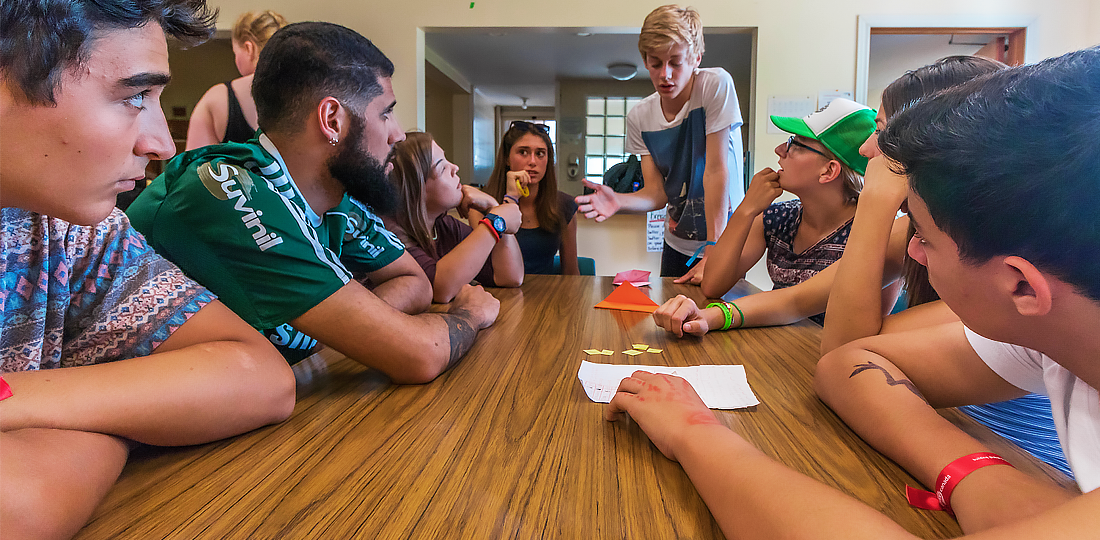Introducing Stand Up
January 25, 2019Hello, Trainers!
January 25, 2019by Einav Dinur and Rupert Friederichsen
Over the last few weeks, we shared with you a bit about CISV International’s approach to Conflict & Resolution, as well as some awesome resources that will be available to you in 2015 (Jirafa Project, Stand Up, Confronting Conflicts, etc.)
We really hope we got you excited to engage in this year’s peace education content area and that we continue to use our involvement in CISV this year to educate children, youth and adults to confidently tackle conflicts and resolve them peacefully.
Conflict can occur at various levels (from inter-personal to global) and it can take many forms (e.g. an argument between two friends, armed violent large scale conflict, etc). Therefore our goal for 2015 is based on two aspects that are worth distinguishing:
1) Conflict out there: Exploring and discussing the content area
2) Conflict right here: Practicing what we preach
What does that mean?
It would be great if we can use 2015 to really dive into the topic of conflicts. For example, have activities and debriefings where we discuss different conflicts in the world or in our life, how they affect society, individuals or ourselves, what are positive and negative outcomes and what are possible resolutions, and so on. Even if sometimes what we see is ugly, we should not look away. That is what we mean by the first aspect of exploring and discussing the theme.
However, it is often comparatively easy to talk about conflicts that are farther from us, even if they are violent and truly horrific. To engage in a smaller “every day” conflict that affects us directly can be much harder, even if the conflict itself is minor. And the simple reason is that when we are involved in a conflict it is personal, emotional, and direct – and that can hurt and it can be very challenging to resolve.
Conflicts of whichever kind are not something most of us like to be involved in or witness. It’s easier to look away and pretend it’s not there, the person that is angry with me, the person shouting at another, the domestic violence which happens in many families, the war going on in …. It is exhausting and often distressing to look at, think about and feel what conflict is about. So it requires will power and emotional resilience to look conflicts in the face, to actually do what we call “stand”.
That is what we mean by the second aspect. While we encourage all of you to have activities and discussions about conflicts out there – don’t forget to practice what you preach. Let’s all make a commitment to TRULY “stand” in the face of conflicts within our CISV work in 2015 (and hopefully beyond). Let’s take a joint initiative to ensure all of our 2015 programmes actively address and resolve conflicts, that all chapter work and international work are constructive in handling conflicts.
In step 2 of 2015, we will provide trainers (both national and international) training frameworks that we would like you to use and build on, in order to ensure CISVers arrive in their programmes equipped with consistent tools and terminology to better handle conflicts and really make 2015 a year where we look conflict in the eye, and peacefully resolve it.
In the spirit of thinking openly and of deepening our understanding about Conflict and Resolution, we want to leave you with a question at the end of Step 1: How do the two aspects of ‘conflict out there’ and ‘conflict right here’ relate to each other? Does conflict out there shape how we deal with conflicts that affect us personally and directly? Does it make a difference to big conflicts if we change personally and in small ways?



